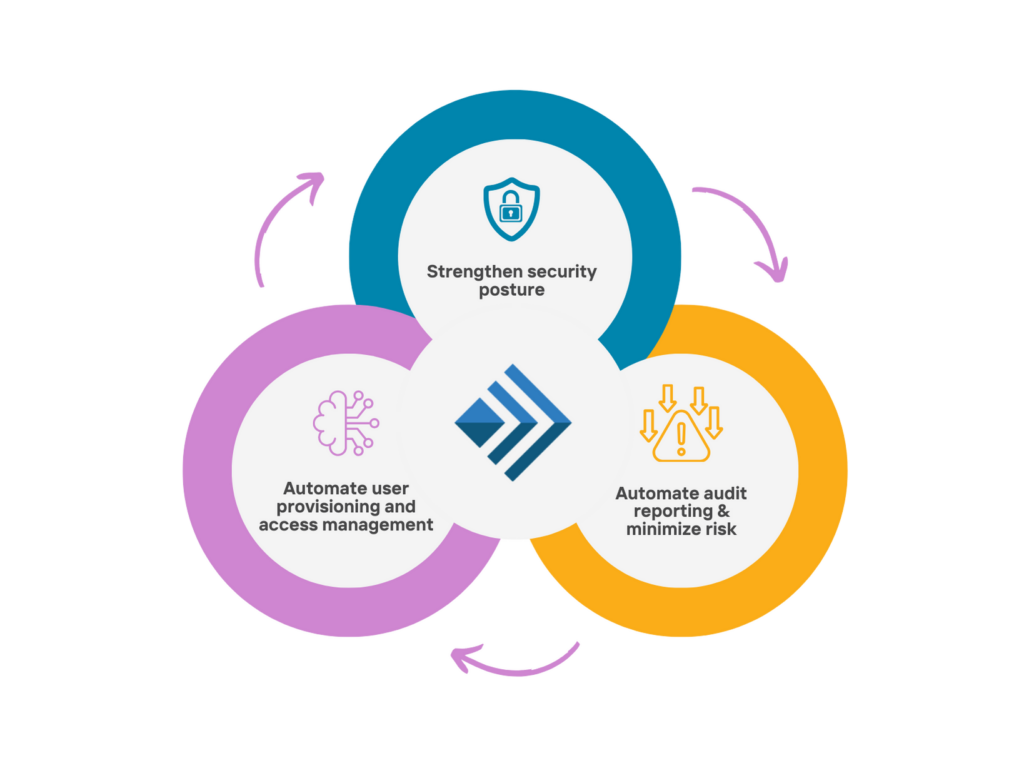
Time to Switch Your Identity Vendor: 7 Signs for Healthcare Organizations

You finally hang up the phone with a tired groan. That was the fifth time this month that a patient’s data didn’t come up when requested. As a CISO for a major hospital, you already get enough trouble from your sluggish management platform. If there’s another incident like last week, where a nurse couldn’t pull up a coding patient’s chart, you’ll probably be looking for another job. If only you could articulate to the higher-ups the root of the problem: you need a new identity vendor.
Perhaps your organization has already sunk time and money into making the current solution work. Maybe you’ve attempted to integrate the solution into your application environment and spent hundreds of hours training your IT staff and end users. But no matter how much you try to accommodate, your identity vendor refuses to do the same. If you’re in a toxic relationship with your MSP, the biggest mistake you can make is not getting out of it.
At the end of the day, you need to do what is best for your organization and the patients under your care. When your current solution fails, you don’t need to fail with it. You need to move to a solution that provides you with ROI, stability, security, and functionality worth the thousands of dollars you pay for them. By recognizing the absence of these factors, you’ll know when it’s time to make a change.
1. Your Return on Investment (ROI) is Unacceptable
Pull no punches when assessing the business value you’re getting from your current identity solution. Start by calculating the total cost of ownership of your identity solution system. Firstly, add up the costs of licensing costs, maintenance, upgrades, consulting fees, professional services, and internal identity staff. Next, compare to the quantifiable benefits have you achieved, such as lowered compliance costs, reduced IT and helpdesk strain, and improved end user productivity. When the solution was implemented, did outpatient satisfaction go up? Have caregivers reported less friction with your systems?
Lastly, don’t forget opportunity cost. What does it cost you to stay with your current identity solution if you’re unable to address pressing business needs? Is the cost to renew, maintain and potentially even upgrade your existing solution higher than what it would cost to switch to a better alternative? If you cannot answer these questions, an identity assessment should be your highest priority.
2. Your Current Identity Vendor Is Mid-M&A
A company acquisition or merger can bring a feeling of anxiety for a customer of either company. The future becomes unclear as to what will happen: whether either company’s product will be available or maintained or if you’ll be forced to migrate to another product altogether. This can even compromise your organization’s security at a time when public eyes will already be on your identity vendor, possibly attracting the attention of hackers.
Any company worth its salt will go out of their way to assure its customers and assure stability throughout their internal changes. If you’re not given an exact step-by-step run-through of how they plan to keep your systems up to par, take the opportunity to bow out. A momentary lapse on a hospital floor can prove fatal to a patient. Similarly, a lapse of months might spell doom for your data integrity. If your current provider can’t tell you what’s happening over the next few months, how you’ll be supported as a customer, and what the merger means for both you and the product, it’s time to start looking for a more stable option.
3. Your Identity Vendor Doesn’t Provide the Integration and Innovation Needed to Future Proof your Identity Solution
Your current identity vendor may have gotten you used to exorbitant development and integration fees. Alternatively, your vendor might not support you in this respect at all, forcing you to have your own development team create a connection point and hope that it works. Does your current identity solution integrate with all of your key systems? Is identity governance the main focus of your vendor, or is it secondary to other services?
Furthermore, your vendor should account for future developments. Does their strategy include plans for cloud-storage, RPAs/bot identities and a rapidly growing AI identity governance capability? Finally, consider the burden of regulatory compliance. The healthcare industry faces increasingly strict cybersecurity standards. Easing compliance headaches is one of the most important services an identity vendor provides. A skillful team anticipates their client’s needs and works to satisfy them. For example, your HIPAA compliance can be greatly eased through automatic data collection. This proves your due diligence in properly handling patient information and keeping it safe.
4. Your Existing Identity Vendor is Forcing You to Migrate to a New Architecture
When your identity governance vendor has “re-architected” its solution and all future investments will be allocated to this new offering, it’s a tough dilemma to face. Unfortunately, implementing the new architecture will require an expensive and time-consuming migration project. You will, in essence, have to start over: rebuilding and re-implementing functionality such as custom user interfaces, policies, workflows and resource connectors. This situation can prove catastrophic in high-activity environments such as hospitals where a single say offline is unacceptable.
Migrating to your existing vendor’s new architecture requires a “rip-and-replace” of your current identity solution. Depending on the policies of the vendor, you may even be expected to foot the bill yourself. Instead, reevaluate your options. Do not assume the best decision is sticking with your current vendor. You may be better off switching to an identity governance vendor with a proven product and satisfied customers. If the prospective vendor demonstrates how they can keep your systems running throughout the migration, bump them to the top of your prospects list.
5. Your Identity Vendor’s Satisfaction and Retention Ratings Are Low
Don’t settle for poor customer support when better options are available. A caregiving environment is challenging enough when systems are running smoothly; a defective identity solution can become a nightmare. Verizon’s 2023 data breach investigations report revealed that 74% of breaches in 2023 stemmed from human error. You cannot afford to associate with subpar staff when your data integrity is at stake. Do some research on your current identity vendor. Talk to other customers that you’ve met at user conferences or trade shows and ask about their satisfaction levels. Make use of analyst firms like Gartner, Forrester, or even other identity vendors.
In the Gartner Magic Quadrant for IGA, Gartner shares customer satisfaction ratings for the major vendors. To go deeper, schedule an analyst consultation and get more details about each vendor’s customer satisfaction and retention scores. It’s never too late to learn more about the people you’re doing business with. Unless, of course, they’ve already damaged you. Do not let things reach that stage.
6. You Don’t Have Visibility into All Your Systems
Does your identity vendor not equip you to answer the 6 identity and access security questions? If not, that alone is reason enough to seek out a new identity vendor. Legacy identity solutions are limited in their availability to integrate with all the systems you use in the organization. For you to be the most secure and know exactly “who has access to what,” you need to implement a governance-based solution.
Modern PAM solutions provide you with moment-to-moment tracking of user activity. Furthermore, a strong IGA solution automatically enforces your policies and can even take advantage of technologies like adaptive MFA for additional security. Your organization’s CISOs can sleep much easier when backed up by such a system, knowing that each identity has a perimeter around it and a remediation strategy behind it.
7. Your Solution is at “End-of-Life” Status
In a market where major companies make absurd mistakes, it is unsurprising that many organizations stick with an identity solution long after it has been moved to “EOL.” Many organizations are reluctant to sign up for the migration effort and worry about business disruption. What is the strategic price you are paying to stay with software that has no future?
Unsupported software won’t keep pace with the exponential acceleration of technology. How can you cope when your solution can’t manage cloud apps or unstructured data, handle mobile and social requirements, or meet new security and privacy mandates? What if you acquire new life-saving machines, only to find them unable to interface with your obsolete systems? While you may still get the occasional patch, they will be few and far between.
The time to change is now. Don’t let inertia keep you trapped in a sub-optimal identity program. It’s time to step forward with identity management solutions that can get your organization back on track. You can achieve big results that will improve end user productivity, strengthen compliance and security, and reduce IT and helpdesk operational costs.
Reach out to a Simeio Identity Expert and see if we might be your best identity vendor choice.
